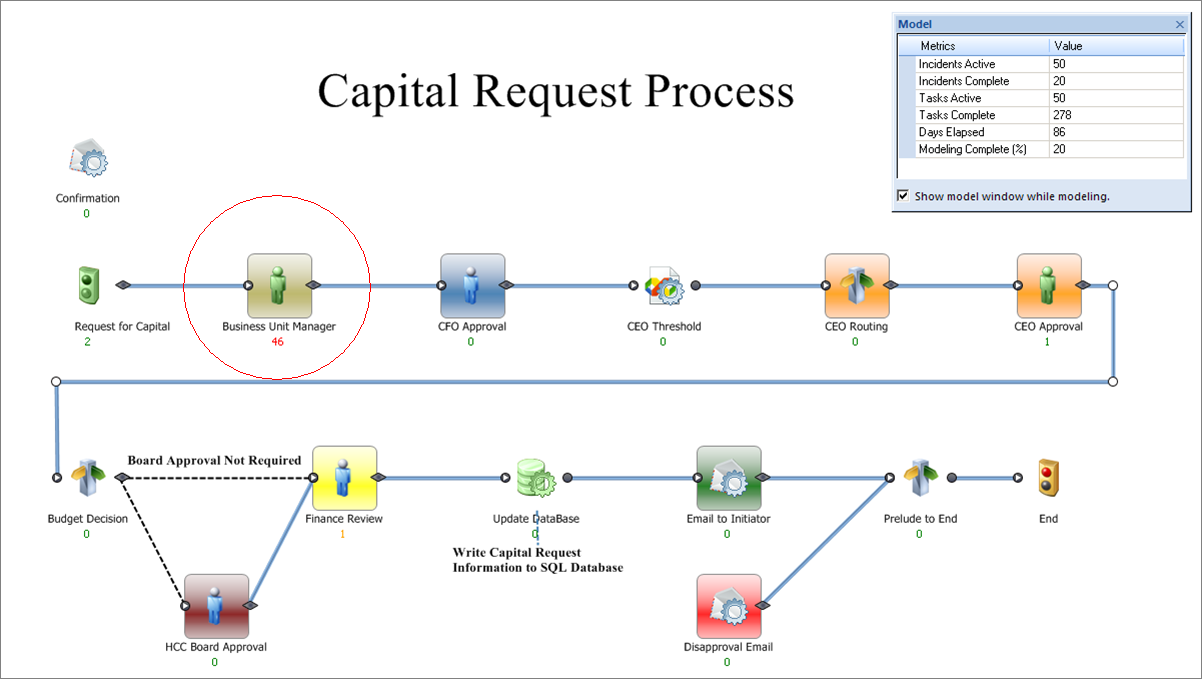It happens to all of us at some point- we get so overloaded with work we wonder if we are ever going to crawl out from underneath it. Unfortunately, this work overload is a frequent cause of sluggish, inefficient and costly processes in many companies. Taking a step back and looking at this from a high level process view, it's easy to see that where it's "pouring" is the bottleneck in the process and the most costly step.

BPM eliminates the "down pour" by allowing tasks to be re-routed to other participants. In the figure above, there is currently one Business Unit Manager (highlighted by the red circle) that is clearly a process bottleneck most likely due to having other responsibilities or perhaps because of the amount of time it takes to process each task (as a side note, bottlenecks such as these can be discovered through process modeling, see my previous post); however, let's imagine that there are 3 managers of the same qualifications. In that case when a task is initiated and sent to the Business Unit Manager step, it would appear in the task queue of all 3 Business Unit Managers. When the first available Manager opens the activity it is removed from the queue and noted within the queue who is working on it and responsible for its completion and transfer to the next phase.
Taking the example a step further, let's say the available manager takes responsibility of the task and then has an emergency and can no longer continue working on it. In this case he/she can re-route the task to one of the other Business Unit Managers (with details and instructions if needed) so that it can be completed as soon as possible and the process does not become locked. This ability to re-route tasks and activities, inclusive with details and notes, is one of the many valuable features found in a quality, adaptive BPM Suite. Other features include:
- Ability to set rules and alerts
- Adaptive discovery of unruly tasks
- Increased visibility into the status of tasks and activities
- Business activity Reporting
- Ability to continuously improve and optimize processes through process modeling
Part of process efficiency is ensuring that the process workload is evenly distributed among work teams and that it is being completed in a timely manner. Collaborating on such tasks facilitates a more fluid movement of activities and more lean operations of the process and company as a whole.
Is your company doing everything it can to maximize efficiency? Are your work teams actually working together? Have you considered implementing a BPM Suite to facilitate the sharing and transfer of work between your process participants?
Relevant Links:
Don't Just Consider Complex and Complicated Processes for Automation
Using Adaptive Discovery- A BPM Best Practice
Getting Started With Your BPM Project
BPM- A Sustainable Strategy for Your Company
Mary Katherine Strupe
Marketing Coordinator
Ultimus


